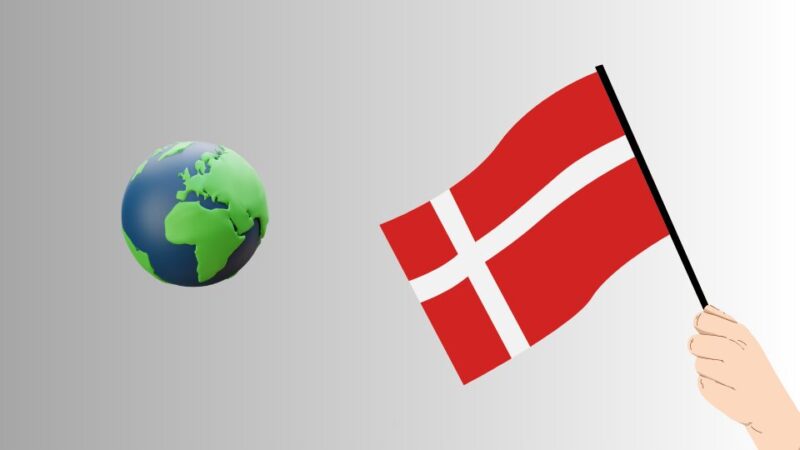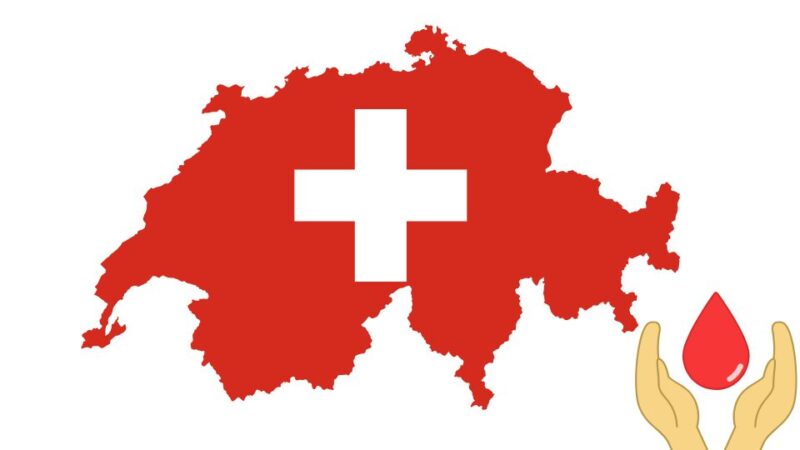Public health systems that focus on accessible healthcare, disease prevention, and effective crisis management set the foundation for a healthier population.
Some countries go above and beyond, offering top-notch healthcare services, advanced infrastructure, and policies designed to protect their people during emergencies.
These nations have become global examples of what it means to prioritize health and well-being.
In this article, we highlight the top 10 countries with the best public health systems in the world.
Sweden: Leading the World in Public Health

- Sweden ranks as the top country with the best public health system, setting a high standard for healthcare globally.
- Known for its universal healthcare policy, Sweden ensures that every citizen has access to affordable and high-quality medical services.
- The country spends around 11% of its GDP on healthcare, one of the highest in the world, reflecting its commitment to public health.
Universal Healthcare for All
The government provides subsidies for healthcare services, making visits to primary care providers and specialists affordable. For example, patients typically pay no more than $35 per visit to a doctor, with annual out-of-pocket expenses capped at around $120.
High Life Expectancy
With an average life expectancy of 83 years, Sweden consistently ranks among the healthiest nations globally. Preventive care plays a significant role, with free vaccinations, extensive prenatal programs, and robust mental health services available to citizens. The infant mortality rate is one of the lowest in the world at just 2.4 deaths per 1,000 live births.
Innovation and Crisis Management
Sweden’s healthcare system demonstrated resilience during the COVID-19 pandemic. Although the country took a unique approach to managing the crisis by avoiding strict lockdowns, it invested heavily in ICU capacity and vaccine distribution.
Over 85% of adults in Sweden are now fully vaccinated, underscoring the efficiency of its healthcare delivery.
Denmark: A Pioneer in Accessible and Quality Healthcare

Known for its efficient and accessible healthcare system, Denmark provides universal healthcare to all residents through a tax-funded model.
The Danish healthcare system is recognized for its high-quality services, short wait times, and patient-centered approach.
A Tax-Funded Healthcare Model
The Danish government covers nearly all healthcare expenses, ensuring citizens and legal residents can access essential medical services without financial barriers.
General practitioner visits, specialist consultations, and hospital treatments are free of charge.
Emphasis on Preventive Care
Denmark excels in preventive healthcare, with programs targeting chronic diseases, mental health, and early detection of illnesses.
The country boasts a life expectancy of 81 years, attributed in part to initiatives like free cancer screenings and national health campaigns promoting physical activity and balanced diets.
Additionally, Denmark has one of the lowest rates of heart disease in Europe, reflecting the success of these efforts.
Digital Health and Innovation
Denmark is at the forefront of healthcare technology, using digital health records and telemedicine to streamline services and improve patient outcomes.
All Danish residents have access to the national electronic health portal, “Sundhed.dk,” which provides medical records, prescriptions, and appointment scheduling in one convenient platform.
Germany: Balancing Public and Private Healthcare Excellence

Germany ranks third in the world for its well-developed public health system, offering a unique model that blends public and private healthcare.
Known for its universal healthcare coverage and advanced medical facilities, Germany provides comprehensive care to all residents.
A Dual System for Comprehensive Coverage
About 85% of the population is covered by public health insurance, while the remaining 15% opt for private insurance plans.
Expert for private health insurance Audelio notes that this dual model allows individuals to choose tailored healthcare solutions while maintaining universal access.
Cutting-Edge Medical Facilities and Outcomes
- Germany is renowned for its advanced hospitals, cutting-edge medical research, and skilled healthcare professionals.
- The country allocates 11.2% of its GDP to healthcare, ensuring that public hospitals and clinics remain well-funded.
- As a result, Germany boasts a life expectancy of 81 years and an infant mortality rate of just 3.1 per 1,000 live births.
- Preventive care is also a priority, with programs addressing cancer, cardiovascular diseases, and mental health issues.
Crisis Response and Pandemic Resilience
During the COVID-19 pandemic, Germany’s healthcare system demonstrated exceptional resilience.
Its robust testing infrastructure, extensive ICU capacity, and early vaccine rollout contributed to lower mortality rates compared to many other nations.
Finland: A Focus on Well-Being and Preventive Care

The Finnish model prioritizes early intervention and affordable access to healthcare for all citizens, supported by a strong network of public health centers.
Affordable Access for All
Healthcare in Finland is mostly tax-funded, with nominal fees for certain services.
For example, a visit to a public doctor costs around $20, and annual out-of-pocket expenses are capped at $800 per person.
Leadership in Mental Health Services
Finland is widely recognized for its comprehensive mental health programs, which aim to address issues like depression and anxiety early.
Nearly 90% of the population has access to mental health services through primary care facilities, contributing to Finland’s high rankings in overall well-being.
Switzerland: Precision and Quality in Public Health

Known for its highly skilled medical workforce and world-class hospitals, the Swiss healthcare system is built on precision and quality.
A Hybrid Model That Works
Switzerland’s healthcare system relies on a mandatory health insurance model where residents purchase basic insurance from private providers.
The government regulates these plans to ensure affordability and coverage for essential services. Over 99% of the population is insured, highlighting the system’s effectiveness.
Leading in Global Health Metrics
Switzerland spends over 12% of its GDP on healthcare, and the results speak for themselves.
Life expectancy in the country is among the highest in the world at 84 years, and the country has consistently low rates of preventable diseases due to its strong emphasis on regular health screenings.
Norway: Innovation and Equity in Healthcare

The Norwegian model is designed to provide comprehensive, high-quality care for all citizens, regardless of income or geographic location.
- Free or Low-Cost Healthcare: Norway’s system is predominantly tax-funded, with most healthcare services being free or available at minimal cost.
- Investment in Innovation: Norway invests heavily in medical research and healthcare technology.
Canada: Combining Accessibility and Quality Care

The country provides essential medical services to all residents without direct charges at the point of care.
Universal Healthcare for All
Hospital visits, diagnostic tests, and doctor consultations are all covered.
The system prioritizes equitable access, although there are ongoing discussions about reducing wait times for certain procedures.
A Healthy Population
Life expectancy stands at 82 years, and the country has low infant mortality rates.
Public health initiatives, such as vaccination programs and anti-smoking campaigns, contribute significantly to these positive outcomes.
United Kingdom: A Legacy of Strong Public Health

The NHS has been a cornerstone of British society, providing universal healthcare since 1948.
The NHS: A Global Standard
It provides comprehensive coverage, including general practitioner visits, hospital care, and prescription medications, with nominal charges for prescriptions in England.
Investments in Public Health
The UK’s focus on preventive care includes free cancer screenings, smoking cessation programs, and mental health services.
Life expectancy in the UK is 81 years, and public health campaigns continue to address obesity and other chronic conditions.
Netherlands: Blending Public and Private for Excellence

The model combines public oversight with private health insurers to deliver accessible and high-quality care.
A Unique Insurance Model
- All Dutch residents are required to purchase health insurance from private providers, with the government regulating prices and benefits to ensure fairness.
- Low-income individuals receive subsidies, ensuring universal access to healthcare.
High Health Standards
- The Netherlands allocates about 10.2% of its GDP to healthcare and ranks high in quality of life indicators.
Japan: A Tradition of Healthy Living and Advanced Care

Japan secures the tenth spot, renowned for its mix of traditional health practices and cutting-edge medical advancements.
The healthcare system ensures that all residents have access to affordable, high-quality services.
Affordable and Universal Healthcare
Japan’s healthcare operates on a mandatory insurance system, where citizens contribute through payroll deductions and receive extensive coverage.
Long Life Expectancy
Japan has the highest life expectancy in the world at 84 years. The focus on preventive care, healthy diets, and regular health checkups contributes to this remarkable achievement.
Japan’s healthcare system also includes advanced treatment options for aging-related illnesses, reflecting its commitment to an aging population.
FAQs
The Bottom Line
Countries with the best public health systems share key characteristics: universal access, robust funding, and a focus on preventive care. Nations like Sweden, Denmark, and Germany set global examples by prioritizing equity, innovation, and efficiency in healthcare.

